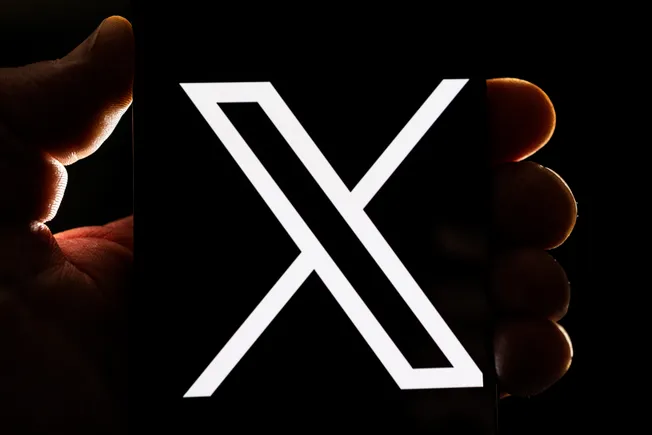Like a lot of people in business these days, Paul Sarvadi believes in the spirit of diversity, equity and inclusion. Everyone, regardless of race, creed or politics, should get a shot at what was once known as the American dream, and companies should do all they can to help make that a reality for as many people as possible.
But, like a lot of those same people, he also believes that something has gone very wrong with the way DEI has come to play out inside many companies in this country. “DEI did start with unifying objectives [but] graduated to this kind of check-the-box mentality,” says Sarvadi. “That happened because DEI became a way for companies to manage liabilities—it would ‘protect’ you. Then it became an energy drain, checking the same silly boxes every year.”
The result? “No one wants to do it,” he says. “And more recently, [with] different approaches, results weren’t happening. Trying other ways to do this became divisive. More recently, those with an alternative agenda have reached the point where it’s potentially toxic. Look at what has happened in very large organizations: There’s toxicity with the potential to affect the value of the company.”
Sarvadi is in a good position to know. He’s the CEO of Insperity, a $6 billion professional employer organization based in Kingwood, Texas, that acts as a full-service HR outsourcing solution. That gives him a clear view into the inner workings of thousands of companies across every size and industry. The experience convinced him that there is a better way to tackle the desire to make sure everyone has a fair shake at success and getting ahead, and led him to use his firm as a lab to put his ideas into practice.
Sarvadi started by launching deep research, with surveys and focus groups, documenting and teasing out how Insperity had managed to create success in the goals of DEI without a specific DEI program before the period of foment of the past few years. That effort led to a book—Making Differences Work: A New Values Based, Culture Driven, People Centric Approach to Achieving Commonality, Equality, Cohesion and Business Performance, cowritten with Eli Jones, a Texas A&M business professor and fellow Insperity board member. It details the company’s approach to one of the knottiest issues on many leaders’ plates: explaining a strategy he says focuses on effectiveness rather than on heeding the items on some sort of ESG-mandated list.
Another Way
The most essential thing, Sarvadi suggests, is that instead of chasing doctrinaire DEI, companies should pursue a strategy that emphasizes three goals as they deal with what became “a powerfully emotional issue for everyone” in the wake of the murder of George Floyd in 2020, the energy that developed behind the issue during the pandemic, and a recent pushback related to everything from the side effects of corporate DEI efforts to the U.S. Supreme Court’s decision banning affirmative action.
“These are higher goals than DEI goals, but they build on the original unifying objectives of DEI,” says Sarvadi. They are:
Commonality. “A bunch of people around a table is good, but it’s when people start realizing their commonality that relationships develop, trust develops and the capability to be effective falls into place,” Sarvadi says. “A business needs to make these differences work.”
Commonality is “the other side of the coin from diversity,” Sarvadi says. “It’s how you make [diversity] pay off” in teamwork. As the authors define commonality in the book, it’s “focused on the shared purpose beyond differences.”
Equality. This is a “better standard, a higher objective within a business” than equity, Sarvadi says. “Equity is really misperceived in the business environment. It can’t be a goal across an organization because, if you look at [its] definition, you’ll find that equity is more related to an individual; equality is the standard for groups that people tie into and connect to, and it increases the validity of what you do.
“If there’s equality in pay and rewards, when people achieve something, they know they got there by a common standard,” Sarvadi continues. Success in this, Jones says, can be gauged by “the extent to which employees feel they have the same opportunities for job promotion that everyone else has.”
Cohesiveness. “Inclusiveness is good, but it’s only a starting point,” he says. “It’s not enough. Cohesion is the goal. That’s when people are sticking together and doing whatever it takes.”
By definition, the book says, “Cohesion is an action. It’s not static, just sitting around in right field [but] implies an ongoing process and belonging.” Business cultures “want more than just inclusion; we want relationships. We want a sense of sticking together. That way, when some big challenge comes up… people don’t start pointing fingers.… Instead, they get on with solving the problem, sticking together.”
Effectively harnessing commonality, equality and cohesiveness (or CEC) as centerpieces is the key to deriving improved business performance compared with an emphasis on traditional DEI, Sarvadi says. The positive business outcomes include greater team creativity, a more collaborative culture, greater employee identification with the organization and more discretionary effort by employees.
“If you do this, you get to your DEI objectives but also get much better business performance,” Sarvadi says.
Yet, he warns, “the biggest obstacle to having success in a company right now on this topic is leadership commitment to making it happen.” Conversely, top-leadership dedication to CEC “represents the biggest opportunity for a breakthrough.” Insperity’s board created a liaison role for Jones to underscore the importance of CEC for the company.
With board-level oversight and top management’s dedication, companies can succeed with CEC, argue Sarvadi and Jones, who offer guidelines for directors to ensure that C-Suite leaders and below execute a CEC approach effectively:
Make sure leadership is committed. Directors must require full support from top management and ensure that the C-Suite doesn’t simply delegate the task of ensuring CEC to underlings. This means, for example, having leaders recognize employees for actions that demonstrate CEC values, Sarvadi says, such as “the team effort that it took to accomplish a significant department objective or an interaction with a customer that demonstrated any one of the values that you connect to the CEC approach.”
Also, boards’ performance reviews for top leaders should reflect CEC values through questions in each area of assessment. “You could [discover] their approach to engaging employees to investigate each other’s [personal] backgrounds, which helps create the level of trust you need,” Sarvadi says.
Look for a blueprint. Sarvadi and Jones suggest a multi-step process that begins with management’s creation of a task force. This gives a head start toward shared responsibility and helps gain commitment across the organization. But “we’re not talking about a committee here,” Sarvadi stresses. “This is a group with a specific timeframe and objective. Then, have people express interest in being on the task force and literally interview them and go through a selection process.”
From there, boards could expect management to develop a baseline survey that allows leaders to determine benchmarks relative to traditional measures; to review what DEI has succeeded and failed in the company, underlining the expectations of a clean start; and to systematically connect the company’s DEI program to existing values.
Demand institutionalism. Directors should expect the C-Suite to weave CEC into every stage of the employee “life cycle, from recruiting and hiring through reviews, promotions and even exit interviews, much more like a higher calling, a much stronger word than just diversity,” the book says.
Boards could insist that at some level, management flyspecks interviews to make sure they integrally include CEC-oriented questions for recruits, such as, “What is an example of your showing mutual respect in your past employment?” Jones says. And “give me an example of your collaborating with others in past employment.” Also, Jones says, management’s promotion process should “keep searches open so that anyone in the organization can apply to be promoted.”
Even company social events “can have an element of what we’re trying to drive with CEC,” Sarvadi says. “Icebreaker-type things, stupid stuff, like getting people to talk about their favorite foods. That’s commonality: getting to know that person and see that you’re the same.”
Commit to push-through. Expect management to ensure CEC will be “people-centric,” helping determine how employees interact with one another over the long term, and that this ethos is shared by all. Instruct the C-Suite to create a report card for the board on CEC that includes not just traditional DEI metrics but also how it is reflected by business outcomes.
And if management concludes that, for one of their members, CEC is “only a sideline, taking them away from what they’re trying to get done,” Sarvadi says, boards should ensure that leaders can “have a discussion about where they’re trying to take their part of business. Do they have the necessary level of indiscretionary effort to elevate [CEC]?”
DEI After DEI
How does a board better manage this tricky issue to sidestep problems, both legal and cultural, but still succeed in building a more cohesive, diverse company? Corporate Board Member reached out to directors and experts for some practical tips.
Re-focus on the right goals. Boards can set the tone for management when it comes to DEI, insisting on determination but also balance and consistency.
“The underlying expectation [of DEI] is fairness and opportunity,” says Eric Pliner, a managing director for Accenture. But, says HR consultant Janet Morrison, “If you swing too far in an attempt to create equity, it can damage your culture and your brand.”
“Assess your recruiting, hiring and promotion systems for a reflection of the community you are in and customers you serve,” says Morrison. “If your employee base doesn’t reflect your customers, it could prove to be a branding problem later on.”
Also, avoid the mistake of liking what you see too much. Some companies simply “slap a quota onto biased systems,” says Joan Williams, director of the Center for Worklife Law at the University of California. “But that presents a political risk, is an extremely ineffective way to address legitimate business goals that flow from diversity concerns, and it ticks people off.”
Consider the critiques. Reverberations of the Supreme Court decision aren’t restricted to academia. Critics are conflating the constitutional arguments involved in that ruling with misplaced corporate DEI efforts.
The case against how DEI has been manifested in companies is embodied in dozens of shareholder proposals being made by the National Center for Public Policy Research. It alleges that target companies are abandoning their fiduciary duties to shareholders by not being neutral on social and political issues and by not acting in accordance with discrimination laws. And 13 state attorneys general recently warned Fortune 100 companies-—warranting their boards’ attention—that “race-based employment violates both state and federal law, [and] we intend to enforce the law vigorously.”
But through this, argues James D. White, former chair of Jamba Juice and now chair of The Honest Co. and executive chair of Air Protein, boards should gauge whether “anything has changed in your values, mission, purpose inside the corporation that would have you make an adjustment based on that ruling, outside of nuanced communications. I don’t know of any leaders who halted activities that were underway that they believed in.”
Evolve to inclusivity. Companies that can harness DEI to improve business are focusing more and more on the “I”: Not just getting diverse employees in the door but working them into the corporate fabric and helping them succeed.
“Every time we have an opening at the managerial level or above, we make sure we have not only a diverse slate of qualified candidates but also a diverse slate of interviewers,” says Karen Bennett, CHRO of Cox Enterprises. “We also interview people in a panel setting so they’re all seeing the same thing at the same time, and they’ll have different reactions.”
Cox is wary of programs specifically advancing female executive leaders “because by definition they are excluding versus including,” she says. “What are we doing to ensure there is an open playing field for everyone? Can you decide that a man can’t join a female leadership program, or, as a father of three girls, could he frankly benefit from that?”
Companies should also, “through behavioral interviews, make sure [prospective employees’] values are aligned with your values,” says Eli Jones, the co-author of Making Differences Work. “Ask questions to see how they feel about joining an organization with regard to esprit de corps and collaboration, like an example of their showing mutual respect from past employment.”
Heed modern sensibilities. Boards should ensure management doesn’t engage in or allow race-shaming to push DEI goals. “If you are stuck in the past and using a history of guilt to teach [employees] about diversity, people are going to act against you if they perceive themselves on the other end of the guilt,” says Morrison.
And be aware of what young workers, the bulk of the modern workforce, believe about DEI. “The idea of a wide mix of people from a variety of experiences and backgrounds is a baseline expectation of Generation Z,” Pliner says.
As White puts it, “Both millennials and Gen Z have grown up with a world that is far more diverse. They kind of look at leadership, including the boardroom, and wonder, ‘Is this a place for me and a place where I can excel?’”
























































![Social Media Spring Cleaning [Infographic] Social Media Spring Cleaning [Infographic]](https://imgproxy.divecdn.com/9e7sW3TubFHM00yvXe5zvvbhAVriJiGqS8xmVFLPC6s/g:ce/rs:fit:770:435/Z3M6Ly9kaXZlc2l0ZS1zdG9yYWdlL2RpdmVpbWFnZS9zb2NpYWxfc3ByaW5nX2NsZWFuaW5nMi5wbmc=.webp)
![5 Ways to Improve Your LinkedIn Marketing Efforts in 2025 [Infographic] 5 Ways to Improve Your LinkedIn Marketing Efforts in 2025 [Infographic]](https://imgproxy.divecdn.com/Hv-m77iIkXSAtB3IEwA3XAuouMwkZApIeDGDnLy5Yhs/g:ce/rs:fit:770:435/Z3M6Ly9kaXZlc2l0ZS1zdG9yYWdlL2RpdmVpbWFnZS9saW5rZWRpbl9zdHJhdGVneV9pbmZvMi5wbmc=.webp)













